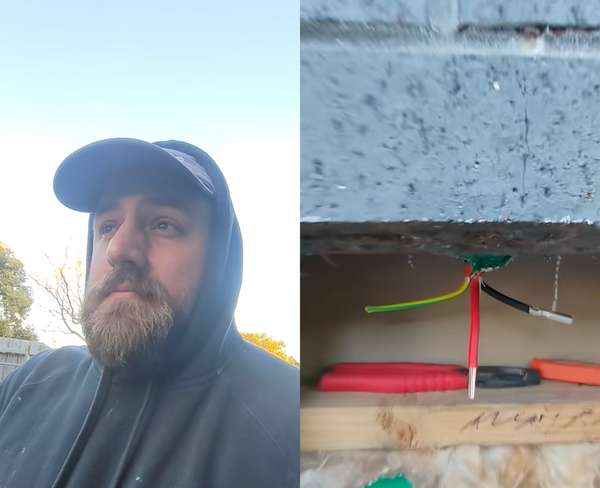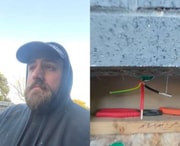
When electrician Jay Kinnell turns up to a construction site in Melbourne and finds his freshly installed copper wiring stripped out overnight for the fifth time this year, he's not just looking at another insurance claim.
He's staring at weeks of delays, discounted repair work, and another nail in the coffin of Australia's housing crisis.
With copper scrap now fetching up to $11.75 per kilogram in Adelaide, nearly double what thieves could get just a few years ago—what was once opportunistic theft has evolved into a sophisticated criminal enterprise that's holding Australia's construction industry to ransom.
A crisis hiding in plain sight
The numbers tell a stark story. In May 2024, Australian police charged three building contractors for allegedly stealing copper cables worth more than $2.5 million, while a syndicate-level criminal organisation stole $780,000 of copper from 50 separate telecommunication pits across Melbourne's north.
These aren't isolated incidents—they're symptoms of a national epidemic.
Copper has surged past US$10,000 a tonne for the first time in two years, driven by tightening supply, making even small amounts of wiring incredibly valuable.
With copper prices rising more than 300% since 2008 and copper recyclers paying around $5 per kilo in a largely unregulated scrap metal industry, thieves are finding construction sites irresistible targets.
'Aircon guys get swamped, but electricians probably have it the worst because our cables are worth the most amount of money, and it's the easiest thing to pull out of a house'
The scale extends far beyond individual tradies' frustrations. Queensland police dealt with more than 18 complaints of copper wire thefts across southeast Queensland in just five months, while unknown offenders have been cutting lengths of copper wire, up to kilometres at a time, with more than 30 reported incidents occurring between Buangor and Serviceton since February 2024.
The perfect storm driving copper crime
Three factors have converged to create this crisis. First, the global transition to electric vehicles and renewable energy has dramatically increased demand for copper, pushing prices to record highs.
Second, rapid approval and commencements meant a bottleneck of new homes under construction, leading to competing demand and shortages of trades and materials, creating more vulnerable sites. Third, organised crime networks have recognised the opportunity.
The true cost of copper theft
While the amount of metal stolen is typically low ($500-$5,000), the risk exposure from a serious injury or death in some cases is in the order of $3 million. Around $10,000 worth of copper was recently stolen from an abandoned hospital, equivalent to over 800 kilograms of copper
A Telstra spokesperson confirmed copper theft was an ongoing issue across Australia for many industries, noting that copper cables still play an important part in networks and 'the impact on customers can be significant if they are unable to contact assistance in the case of an emergency.'
Housing crisis gets worse
The ripple effects extend far beyond individual construction sites. Construction costs for a detached house have risen over 30 per cent since the onset of the pandemic, and copper theft is adding to these pressures.
The average new house completion time for Australia increased 50.0% since September 2019, from 6 months and 3 weeks to 9 months and 4 weeks in June 2024.
For Australian seniors watching their children and grandchildren struggle to enter the housing market, these delays matter. Every stolen cable means another week without a roof over someone's head, another month of rental uncertainty, another blow to an already fragile construction industry.
Residential construction costs rose 3.4 per cent in 2024, with labour continuing to be the main driver of construction cost increases.
When tradies like Jay have to redo work at discounted rates to help builders affected by theft, it squeezes margins across the entire industry.
Fighting back with technology and teamwork
The response has been swift and sophisticated. The Macon/Middle Georgia Metal Theft Committee in the United States saw copper theft reduced by 90 per cent within three months of implementing multi-agency cooperation, providing a model for Australian authorities.
Victorian police recommend engraving all tools and equipment with a driver's licence number, locking up all tools overnight, and keeping detailed records of material movements. But the most effective strategies go further.
Advanced protection strategies
One effective deterrent is painting all copper components black to give the appearance of worthless plastic conduit, combined with fencing off areas that contain copper items.
Property marking has long been recognised as a crucial measure in discouraging and detecting crime, with associated signage and public education acting to reduce the attractiveness of metal assets to thieves.
Technology is also playing a crucial role. Managed surveillance cameras are proving most effective for preventing metal theft within remote and temporary locations such as construction jobsites, though experts recommend a blended approach to security.
Protecting your property from copper theft
• Minimise time between delivery to construction site and installation
• Hide metal supplies from casual view or paint copper different colours
• Use warning signs around your site showing security measures like surveillance cameras and fencing
• Use property markers and crime prevention signage
• Consider tracking devices on expensive equipment and attach to items like hot water systems and raw materials
What's being done at government level
Authorities aren't sitting idle. The Department of Transport and Main Roads is exploring several avenues to deter and prevent further vandalism and theft to electrical infrastructure, including investigating new technologies to improve monitoring and security.
Standardised transaction recording requiring scrap metal recycling companies to record all transactions can make it easier to track down stolen goods and offenders, with comprehensive data on sellers including their name, address and driver's licence number.
Source: @jay.the.sparky / Tiktok.
The human cost remains the most compelling argument for action. When networks go down, families can't reach emergency services, older Australians cannot talk to their doctors, and kids can't do their homework online.
Regional hotspots emerge
The problem isn't evenly distributed. Statistics show that these crimes are becoming more concentrated in regional areas, with cities like Ballarat being described by energy providers as 'definitely a hotspot.'
Western Australia has experienced the worst bottleneck of builds, with completion times increasing from around 6 months and 4 weeks in September 2019 to 16 months and 1 week in March 2024.
Did you know?
More than 75% of copper items are made from recycled copper, demonstrating the circular nature of copper's creation and rebirth process. This makes legitimate copper recycling vital for the economy, but also provides cover for criminals selling stolen materials.
The road ahead
As Australia grapples with its housing crisis, copper theft represents another layer of complexity that's making homes more expensive and harder to build. Currently, every Australian state and territory is lagging behind in the nationally agreed target of constructing 1.2 million extra homes by July 2029.
For tradies like Jay Kinnell, each theft doesn't just mean lost income—it means another family waiting longer for their home, another delay in addressing Australia's housing shortage.
The solution requires community-wide vigilance. Neighbours reporting suspicious activity to Crime Stoppers on 1800 333 000 remains one of the most effective tools in the fight against copper theft.
For older Australians who remember a time when construction sites weren't fortresses and tradies didn't need to worry about overnight raids, the copper crime wave represents more than just property theft—it's symptomatic of broader challenges facing the communities they've helped build.
Tradie fed up as sinister act on property exposes worsening trend across Australia
https://au.news.yahoo.com/tradie-fe...-across-australia-205141107.html?guccounter=1
'Average Copper Price: AUD $6.40 – $9.40 per kilogram.'
https://www.scrapsmetalprices.com/
'Australian police charged three building contractors on Tuesday for allegedly stealing copper cables worth more than $2.5 million.'
https://www.scmp.com/week-asia/econ...ts-dizzying-rally-powers-metal-new-oil-status
'A syndicate-level criminal organisation stole $780,000 of copper from 50 separate telecommunication pits across Melbourne's north.'
https://latrobevalleyexpress.com.au/news/2025/07/15/copper-theft-on-the-rise/
'With copper prices rising more than 300% since 2008 and copper recyclers paying around $5 per kilo in a largely unregulated scrap metal industry.'
https://www.aic.gov.au/publications/rip/rip19
'This was an extensive investigation that dealt with more than 18 complaints of copper wire thefts across southeast Queensland.'
https://mypolice.qld.gov.au/news/2024/11/20/copper-wire-thefts-gympie-and-southeast-queensland/
'Unknown offenders have been cutting lengths of copper wire, up to kilometres at a time, with more than 30 reported incidents occurring between Buangor and Serviceton since February 2024.'
https://arr.news/2025/03/19/copper-thefts/
'Rapid approval and commencements meant a bottleneck of new homes under construction, leading to competing demand and shortages of trades and materials.'
https://www.altusgroup.com/insights/australian-construction-material-price-outlook/
'While the amount of metal stolen is typically low ($500-$5,000), the risk exposure from a serious injury or death in some cases is in the order of $3 million.'
https://www.rms.org.au/news/copper-theft-how-to-turn-5000-into-25/
Original article
Scrap Metal Prices (Copper, Steel) In Australia 2024
Australia clamps down on copper thefts as dizzying rally powers metal to ‘new oil’ status | South China Morning Post
Copper theft on the rise | Latrobe Valley Express
Strategies for preventing scrap metal theft | Australian Institute of Criminology
Copper wire thefts, Gympie and southeast Queensland—Queensland Police News
Copper thefts | Australian Rural & Regional News
Australian Construction Price Outlook—Q1 2025 | Altus Group
Copper Theft: How to turn $5,000 into $25 | RMS
Have you noticed suspicious activity around construction sites in your area? The fight against copper theft relies on community vigilance—share your observations and tips for keeping our neighbourhoods safe in the comments below!







